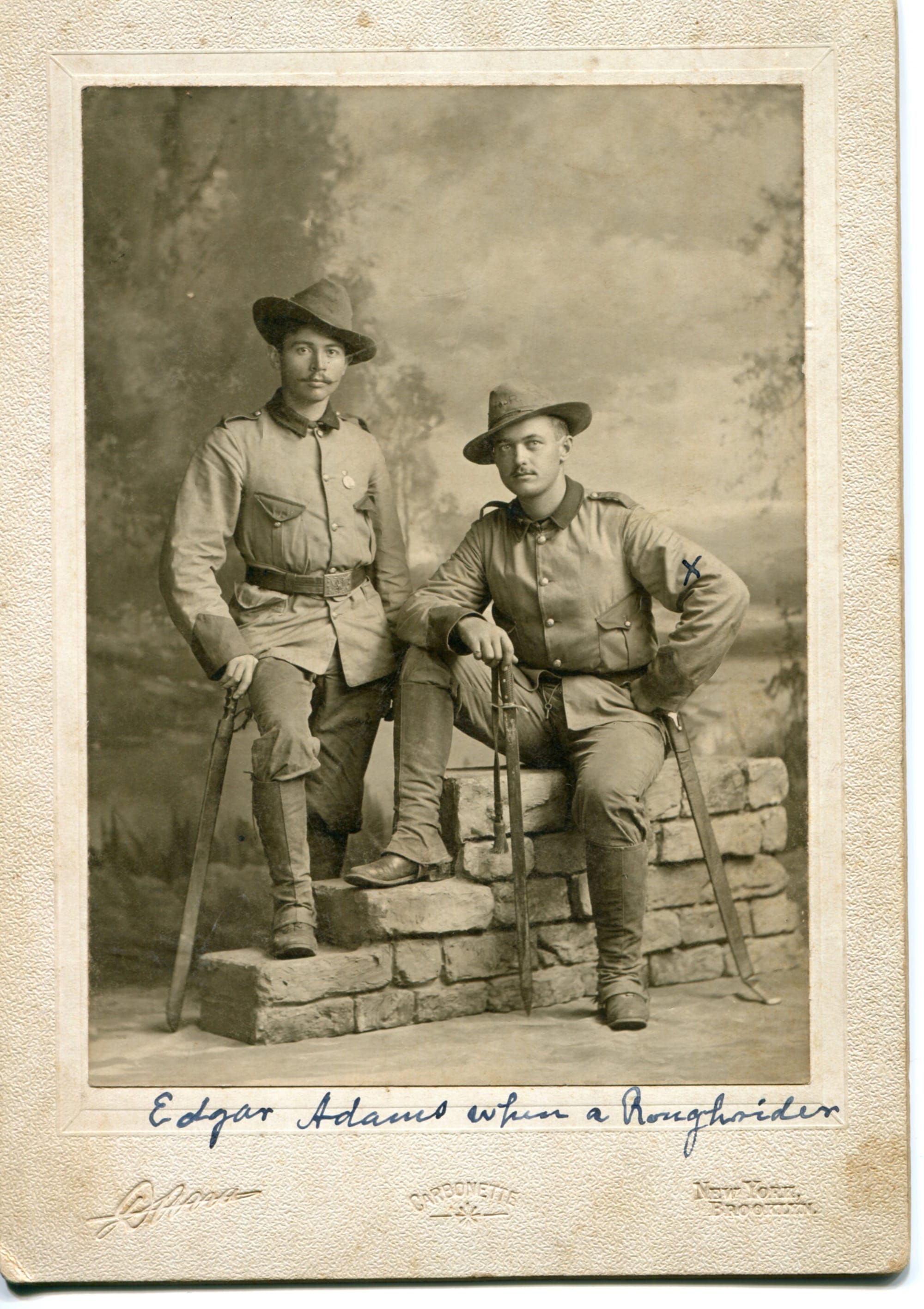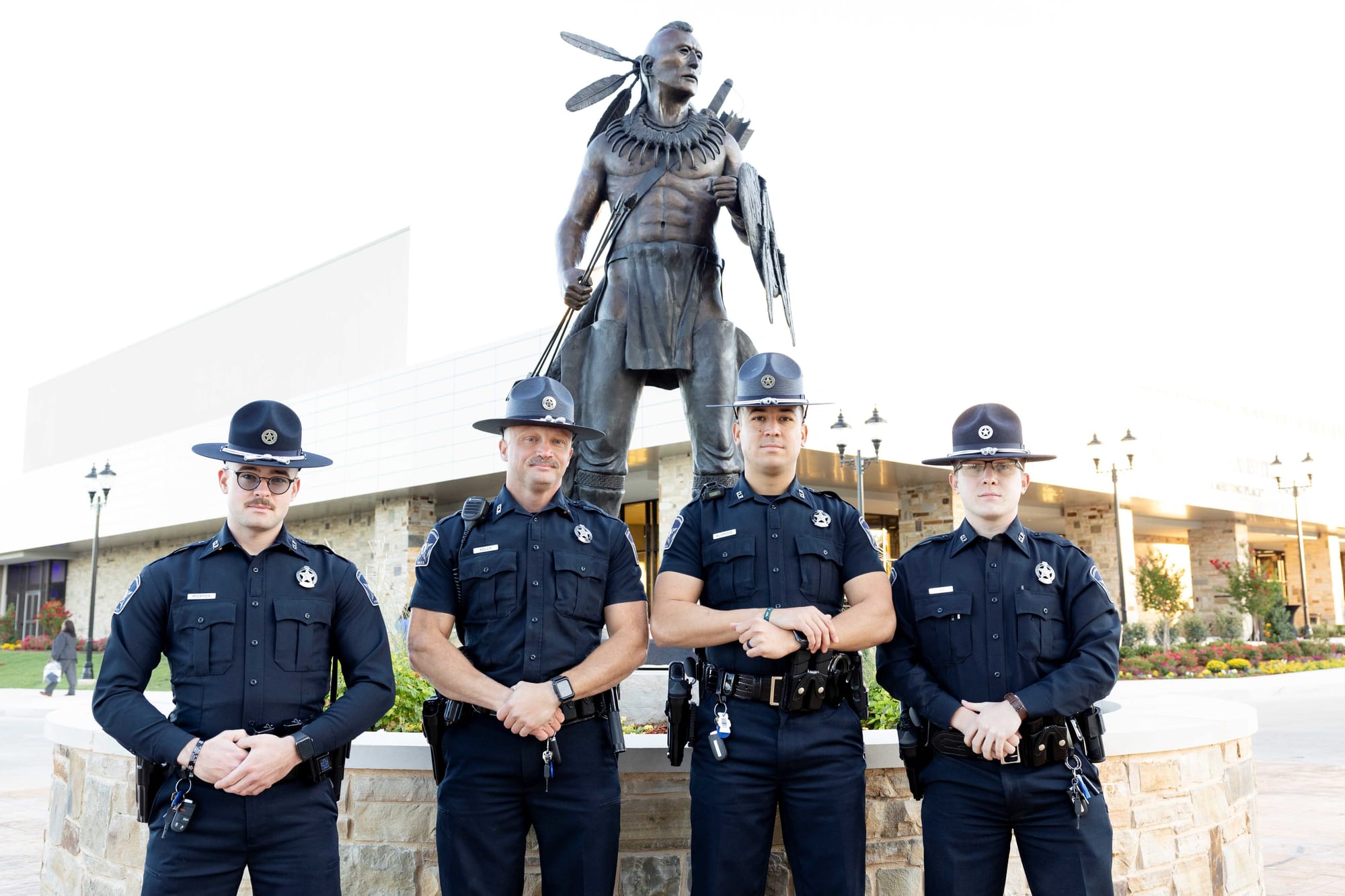
Ada, Okla. – Chickasaw Lighthorse Police had been protecting Chickasaw citizens for the better part of seven decades when Oklahoma became a state in 1907.
Following Oklahoma statehood, tribal government changed drastically, and all the Chickasaw Nation’s governmental buildings, agencies, and responsibilities, including law enforcement, were transferred to the U.S. government.
Almost a century later, Chickasaw Nation Governor Bill Anoatubby shared his vision of reestablishing Chickasaw Lighthorse with Lisa John, then tribal self-governance administrator, and assigned her to lead the effort in doing so.
This year marks the 20th anniversary of the realization of that dream.
“Working hand in hand with federal, state and local law enforcement officers, the Lighthorse Police Department is part of a cooperative effort to provide a much- needed service to every citizen who lives in the Chickasaw Nation, and beyond,” Governor Anoatubby said at the 2012 ribbon cutting ceremony at the new Lighthorse headquarters.
Twenty years ago, in 2004, First American law enforcement was under the purview of the Bureau of Indian Affairs (BIA).
The BIA had six officers and their chief patrolling the expansive 13-county Chickasaw Nation boundaries and were depending on an answering service to handle dispatch duties.
“The BIA didn’t have the capacity to locate officers throughout the tribal reservation to respond to the incidents or emergencies on tribal land,” John said.
Reestablishing Lighthorse would need to be accomplished through a plan that included compacting other functions performed by the BIA at the time.
“Governor Anoatubby had a plan for compacting these vital BIA programs,” John said. “His plan was to first compact the functions of the Court of Indian Offences (CFR court) to establish our own judicial department. Second was to compact the functions of law enforcement thereby reestablishing the Lighthorse police. My job as the self-governance administrator was to develop and negotiate the agreements with the Bureau of Indian Affairs.
“Compacting wasn’t too difficult. We had a very good relationship with our local BIA Chickasaw Agency and also the BIA Eastern Oklahoma Region in Muskogee. We drafted an addendum to the multiyear funding agreement and made them aware we were going to assume the function of law enforcement and the funding that went with it,” she said.
The real challenge was the hard work of fashioning a police force from scratch.
The job to tackle all the associated issues fell to John, Deanna Hartley- Kelso (now Special Judge for the Chickasaw Nation District Court) and Debra Gee, both of whom worked in the Chickasaw legal department, and Lori Hamilton, John’s right-hand person in the self-governance office.
“What we did was really look at all aspects of what it takes to run a police department,” John said. “We worked as a team. The most interesting thing I have ever had to do is work with a team to create an agency from zero up.”
They wisely sought counsel from those who did have experience in the field.
“BIA officers Jason O’Neil and Vincent Walters were very big resources for us. Jason met with us regularly and helped us develop a checklist on what our law enforcement needed to be a successful team.”
Funding from BIA only allowed for seven officers and contracting with the answering service to act as dispatch for the fledgling force.
“We did not like the idea of using an answering service,” John said. “We felt it was not personable, and our citizens would want to talk with a real dispatcher in an emergency situation.”
The problem was remedied when Governor Anoatubby approved hiring four dispatchers and one supervisor.
“We began developing the positions and job descriptions. I updated the Governor along the way, and the whole time he supported us as we moved forward.”
These steps were just the tip of the iceberg. Uniforms had to be created, as did logos for cars and deciding on the cars themselves, including how to equip them and the officers.
Dusk Monetathchi, current Chickasaw Nation legislator, was the first officer sworn in and sent to the BIA law enforcement training center in Artesia, New Mexico.
After many prospects were interviewed, Jason O’Neil, trusted advisor, was hired as the Chickasaw Lighthorse’s first chief. The next step was to hire seven officers.
“When we announced we were hiring officers, we had a hundred candidates show up to the assessment,” John said. “We had a really strict process to hire them.”
John said all officers had to endure a rigorous interview, a physical fitness test with timed running metrics, an agility test and a written test.
It was not long before Governor Anoatubby approved a request to increase the officer count and add a K-9 officer. Today, Lighthorse also has a dive team and a SWAT team.
“Governor Anoatubby supported what we needed to build a larger police force,” John said. “I can’t say enough about the support we received from the Governor every step of the way. I am honored to have been the person to negotiate the assumption of law enforcement and to be the first administrator overseeing the Lighthorse.
“But it took the help from the legal division, officer Jason O’Neil, the late officer Vincent Walters and my staff to successfully assume the functions,” she said.
“On Oct. 1, 2004, the Chickasaw Lighthorse Police was reestablished under the Chickasaw Nation’s division of self-governance,” wrote Michelle Cooke, senior staff writer for Chickasaw Press, in her book “Protecting Our People – Chickasaw Law Enforcement in Indian Country.”

In 2004, they were housed in trailers situated on the current grounds of the Chickasaw Nation Headquarters at Mississippi and Arlington streets in Ada.
From these humble beginnings, today’s Chickasaw Lighthorse has matured into a force of more than 100 sworn officers with 24 support personnel.
One feature has remained the same. The Chickasaw Nation covers all or parts of 13 counties (Bryan, Carter, Coal, Garvin, Grady, Jefferson, Johnston, Love, Marshall, McClain, Murray, Pontotoc and Stephens) for a coverage area of 7,648 square miles.
This area is divided among three precincts. The Newcastle Precinct serves Grady, McClain and Stephens counties. WinStar’s Precinct serves Bryan, Carter, Jefferson, Love and Marshall counties. The Ada Precinct is responsible for Coal, Garvin, Johnston, Murray and Pontotoc counties.
Cross-deputation agreements with other law enforcement agencies have always been important to the contemporary Chickasaw Lighthorse, but recently took on a new relevance with recent U.S. Supreme Court decisions.
A Supreme Court ruling in 2020 stated the U.S. Congress never disestablished the Muscogee Nation reservation, and an ensuing Oklahoma Court of Criminal Appeals ruling in 2021 applied that ruling to the Chickasaw Nation reservation. This meant that most crimes committed by tribal citizens on tribal land were under the purview of tribal law enforcement.
In a true spirit of cooperation, cross- deputation agreements with a total of 79 municipal, state, tribal and federal agencies allow that responsibility to be legally shared.
In 2012, Governor Anoatubby appointed Randy Wesley Chickasaw Lighthorse Chief of Police and in 2017, he was promoted to Commissioner of Tribal Law Enforcement for the Chickasaw Nation.
Commissioner Wesley says the McGirt decision meant more officers were required to fill the department’s mission of covering its large area and servicing the thousands of calls Lighthorse police receive yearly.
“Manpower coverage has increased,” Commissioner Wesley said. “In November of 2012, we had 31 officers. Now we have 105. The McGirt decision had a huge impact. We had about 65 officers when the McGirt decision was handed down. We have 7,648 square miles to patrol and averaging approximately 30,000 calls a year for service.”
Tammy Hughes, Lighthorse crime analyst, was there at the beginning and still finds it difficult to believe the strides the department has made in the last two decades.
“In 2004, Chief O’Neal would tell us some day we would have over a hundred employees. It was hard to envision since we only had 11,” Hughes said.
“Now, 20 years later, the Chickasaw Lighthorse Police has grown to over a hundred employees and become, I believe, one of the most respected law enforcement agencies. It has been truly a gift and an honor to serve the Chickasaw Nation people,” she said.





